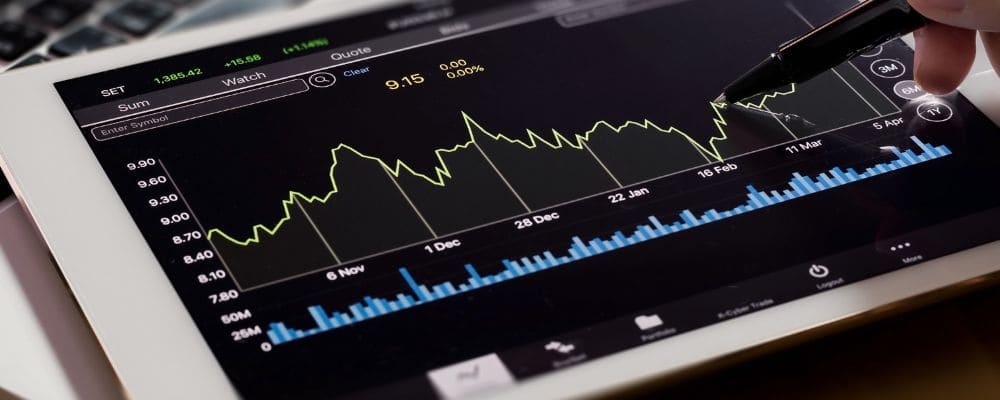Top pivot point strategies for Forex traders

Pivot points are a Technical analysis indicator that traders use to determine potential support and resistance levels for the upcoming trading session. They are calculated based on the previous day’s high, low, and closing prices, serving as a benchmark to predict where price movements might stall, reverse, or break out.
The primary purpose of pivot points is to provide traders with key levels that can guide decision-making in both trending and ranging markets. These levels help identify market sentiment—whether it’s bullish or bearish—and support a structured approach to trading.
The basic formula for calculating the pivot point (P) is:
P = (High + Low + Closing price) / 3
From the pivot point, additional levels of support (S1, S2) and resistance (R1, R2) are calculated using straightforward formulas. While variations like Fibonacci or Camarilla pivot points exist, the core idea remains consistent: to simplify market analysis and enhance precision in trading decisions.
Types of pivot points in FX trading

Pivot points come in several variations, each with a unique calculation method that caters to different trading styles. Understanding these types can help traders choose the one that aligns best with their strategy.
Standard pivot points
Standard pivot points are the most commonly used type and are calculated using the average of the previous day’s high, low, and close prices. They provide a central pivot level (P) along with support (S1, S2) and resistance levels (R1, R2). This simplicity makes them a go-to tool for traders of all levels.
Fibonacci pivot points
Fibonacci pivot points incorporate Fibonacci retracement levels into the calculation, offering more dynamic support and resistance levels. The pivot point (P) is calculated as usual, but the support and resistance levels are adjusted using Fibonacci ratios such as 61.8%, 38.2%, and 23.6%. This type is particularly favored in trending markets.
Camarilla pivot points
Camarilla pivot points focus on tighter price ranges, making them ideal for intraday trading. They use a complex formula to generate up to eight levels of support and resistance, emphasizing reversals near the day’s opening price. Camarilla levels are often used to predict quick rebounds or breakdowns.
Woodie pivot points
Woodie’s pivot points place greater emphasis on the closing price, making them more reactive to recent market activity. The formula assigns more weight to the close, making it suitable for traders seeking to adapt quickly to market changes.
Demark pivot points
Demark’s pivot points differ from others by focusing on the relationship between the open and close prices. This method calculates only one resistance and support level, making it a simpler but less commonly used approach.
How to use pivot points in Forex trading

Determining market sentiment: above vs. below the pivot point
The central pivot point (P) acts as a dividing line for market sentiment.
- Bullish sentiment: If the price is trading above the pivot point, it suggests buyer dominance, indicating a potential uptrend.
- Bearish sentiment: If the price is below the pivot point, it reflects seller dominance, signaling a potential downtrend.
By observing price action relative to the pivot point, traders can gauge whether to focus on long or short trades.
Support and resistance trading: using S1, S2, R1, R2
Pivot points provide clearly defined support (S1, S2) and resistance (R1, R2) levels, which traders use to time their entries and exits:
- Support levels: When the price approaches S1 or S2, it may bounce back, providing buying opportunities.
- Resistance levels: When the price nears R1 or R2, it may reverse downward, creating selling opportunities.
Traders often set stop-loss and take-profit levels around these points to manage risk.
Case study: How to analyze Tesla stock chart: a beginner guide to indicators, charts, and trading strategies
Breakout strategies: when prices break key pivot levels
Breakouts occur when the price moves decisively above resistance levels (R1, R2) or below support levels (S1, S2).
- Bullish breakout: A price move above R1 or R2 may indicate strong buying momentum, offering opportunities for long trades.
- Bearish breakout: A drop below S1 or S2 suggests strong selling momentum, signaling potential short trades.
Breakouts can be particularly powerful in volatile markets, but traders should confirm the move before acting.
Combining pivot points with other indicators
Pivot points become even more effective when used alongside other Technical indicators for confirmation:
- RSI: Helps determine overbought or oversold conditions near pivot levels.
- MACD: Identifies momentum and potential trend reversals at pivot points.
- Trendlines: Offer additional context for price movements and validate pivot point signals.
By integrating pivot points with these tools, traders can enhance their accuracy and confidence in making trading decisions.
Pivot points provide a structured approach to analyzing the market, making them a valuable addition to any trader’s toolkit.
Best brokers to trade with pivot point strategies

AvaTrade pivot point trading
AvaTrade provides an intuitive trading platform with built-in Technical analysis tools, including pivot points. Their platform is designed for traders of all levels, offering a balance of simplicity and advanced charting capabilities. AvaTrade also features a demo account, allowing traders to practice their pivot point strategies without risking real money. This is especially beneficial for newcomers learning to integrate pivot points into their trading plans.
Also, AvaTrade provides free trading signals through its AvaTradeGO app and other integrated tools, helping traders identify potential opportunities.
BlackBull Markets pivot point trading
BlackBull Markets, known for its tight spreads and low-latency execution, is an excellent choice for pivot point traders who value precision. Accurate order execution is critical when trading pivot levels, particularly during breakouts or reversals. BlackBull also offers robust educational resources, helping traders understand how to maximize pivot point strategies in real-market scenarios.
The broker provides access to various market analysis tools and expert trading signals, giving traders actionable insights.
NAGA Markets pivot point trading
NAGA Markets stands out with its innovative Social trading platform, allowing traders to observe and copy strategies from experienced professionals. If you’re learning to trade with pivot points, this feature provides a unique opportunity to see how seasoned traders interpret and apply pivot levels in real-time. Additionally, NAGA Markets supports a wide range of Forex pairs, offering flexibility to test pivot point strategies across different markets.
Exness pivot point trading
Exness is highly regarded for its competitive trading conditions, including low spreads and flexible leverage. Exness provides free trading signals and real-time market data, allowing traders to make informed decisions quickly.
Exness’s advanced charting tools and accurate market data make it easy to integrate pivot points into trading strategies. The broker’s flexibility with leverage also enables traders to optimize their risk management.
By choosing these brokers, traders gain access to high-quality signals, top-notch tools, and risk-free practice environments, all of which enhance their ability to trade effectively with pivot points.
Related articles:
How to use pivot points for accurate Forex trading strategies - FAQ